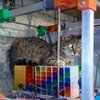What is it
Plant Bot is an innovative device that transforms your beloved pot into an active participant in plant care. With a USB-powered PCB that seamlessly integrates essential features like a moisture sensor, it eliminates the need for additional wiring. This sleek design facilitates remote plant care over extended periods, proving invaluable for my office plants in the current work-from-home era and during prolonged absences.
Before diving further, I have to thank JLCPCB for sponsoring this project. They have been a crucial part of the process by enabling me rapid prototype without compromising quality. All of the PCBAs related to this project were prototyped and assembled by them. I highly recommend them for the high quality, cost, and time-efficient, if you intend to design and build any boards of your own.
Leveraging existing open-source projects, the Plant Bot can be programmed using Micropython and Arduino. Power users can also use the ESP-IDF tool for maximum customization.
Key Features;
- Corrosion-resistant capacitive moisture sensor.
- Hassle-free setup: Simply insert the moisture sensor stake into your chosen pot.
- Integrated pump driver.
- Multi colour LED control.
- WiFi and Bluetooth connectivity.
- Battery-powered operation as a low-power IoT device.
Use case | Fully Automated Plant Care
The provided sample code showcases the device's capabilities. It measures soil moisture and light levels, and takes actions based on the data. The WS2812B LED's color spectrum, ranging from red (dry) to blue (moist), offers an intuitive visual representation of soil conditions. An additional LED signals pump activation for soil hydration. Built on the ESP32 platform, Plant Bot boasts comprehensive WiFi and BLE connectivity, which I've utilized to transmit data to a Thingspeak channel. A data snapshot is provided below.
Use case | Connected Plant Node
Harness Plant Bot's low-power design to connect your plants to the internet wirelessly. I've developed demos that allow Plant Bot to send Telegram notifications or relay measurements to IoT platforms like Thingspeak or Firebase. With the ESP32's minimal power consumption during deep sleep, a single coin cell battery can last up to a week with daily updates. Reducing update frequency extends battery life even further. Quick USB-C charging ensures Plant Bot remains a reliable companion for plant enthusiasts with extensive collections.
Specification
- Microcontroller | ESP32-C3-MINI
- WiFi | 802.11b/g/n
- Bluetooth | BLE 5.0
- FLASH | 4MB
- Programming | USB over JTAG
- Light Sensor | TEMT6000X01
- Angle of half sensitivity | ± 60°
- Peak sensitivity | 570nm (suitable for plants)
- Motor Driver | DRV8837CDSGR
- Peak Current | 1.2A
- Voltage | 5V (VUSB)
- Interface | GPIO
- Battery Charger | BQ24073RGTR
- Over Temperature, Voltage & Short Circuit Protection
- Charge Current | 1.5A
- Power | 700mA 3.3V LDO
- Mounting | FR-4 Stake into Soil
 YJ
YJ





you inspired me. here is my shot at it. i'm not as advanced as you are.
https://hackaday.io/project/185909-plant-sensor-node